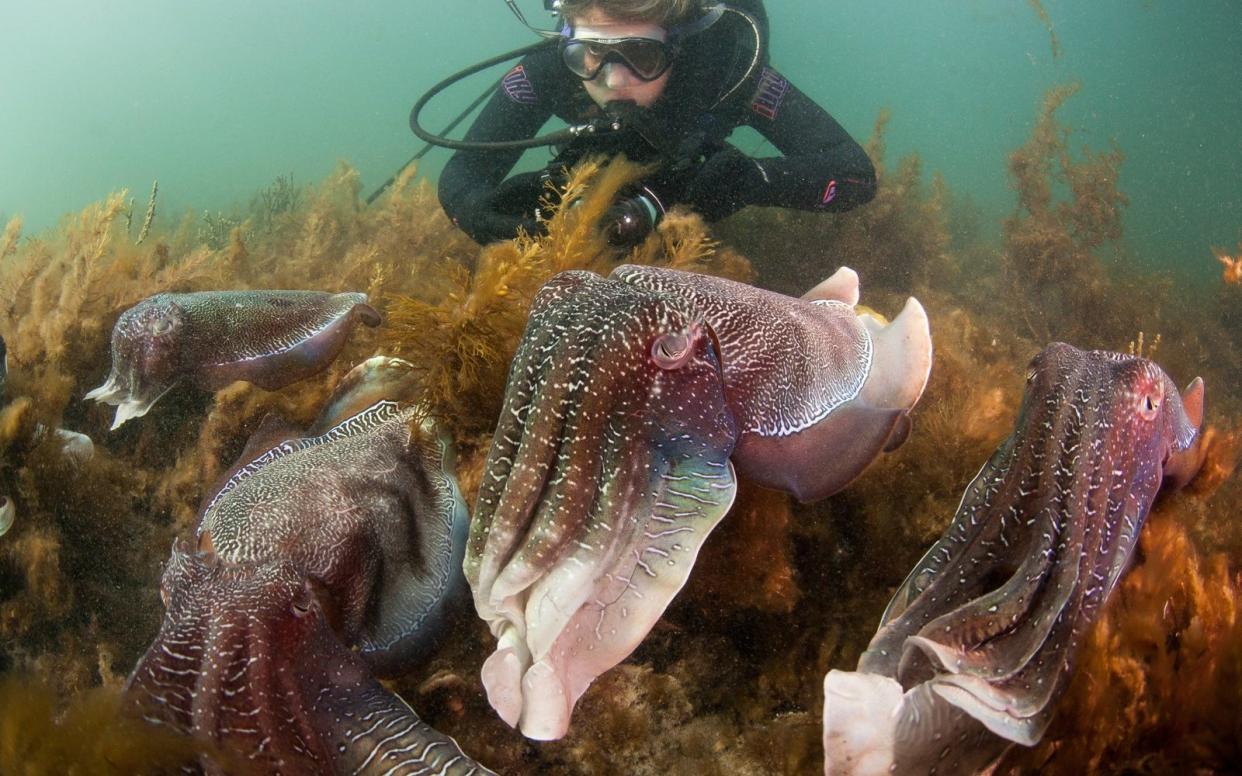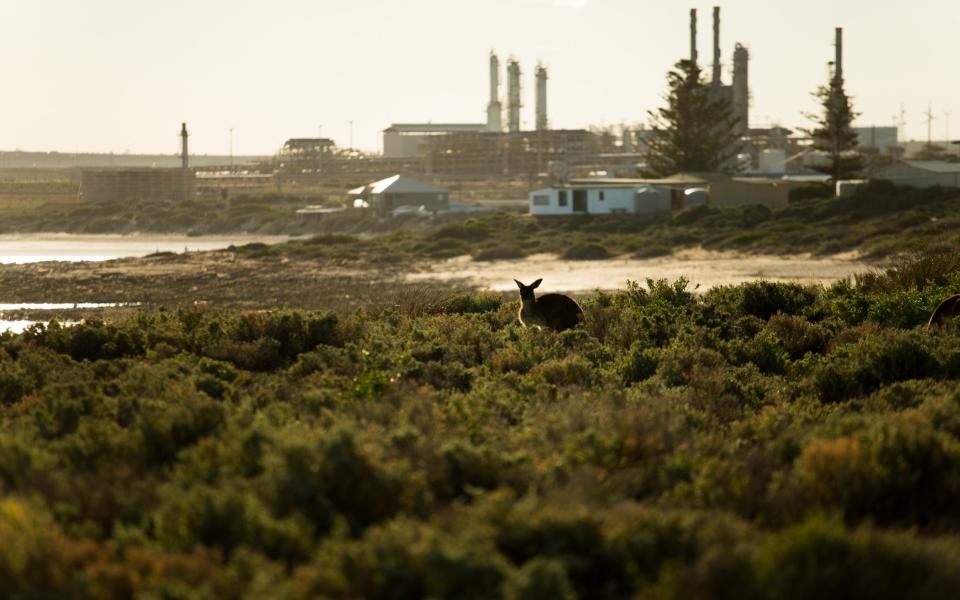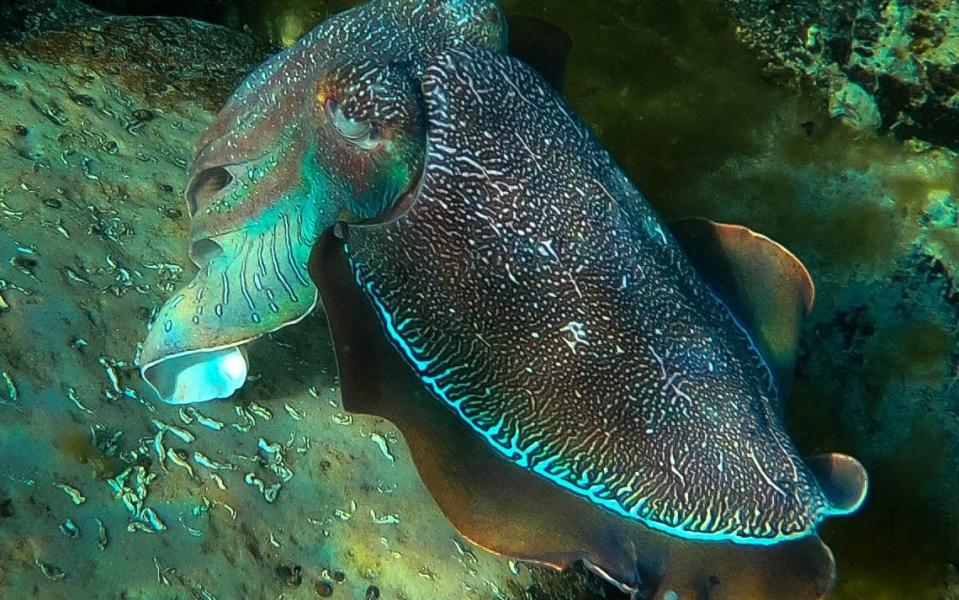The colourful spectacle of cuttlefish-mating in Australia

It seemed like an odd place for a romantic rendezvous – an overwhelmingly industrial city, loomed over by a steel mill and a four-hour drive from the South Australian capital of Adelaide. Yet it was here, in the city of Whyalla, where I had been invited to witness one of nature’s – and indeed the world’s – most famous love-ins …of the wildlife kind. Every year between June and August, like clockwork, swarms of giant cuttlefish gather in the shallows of a sheltered bay called Stony Point, providing curious land dwellers the chance to see what can only be described as a technicolour underwater orgy.
“As soon as you go in you’ll see a flash of colour in the distance, that’s usually the males,” explained Carl Charter as I pulled on my wetsuit. He is a diver and program manager at Experiencing Marine Sanctuaries (EMS) who offer guided snorkels of the phenomenon. “They’ll likely have their arms and tentacles up ready to fight – there’s 11 males to every one female.”
Pulling on my mask and snorkel I waded into the waist deep water and felt its chill immediately – forget the adage about a cold shower being a mood-kill, the cuttlefish mating season happens in the Australian winter when the water temperature is just 12-15 degrees Celsius. Thankful of my neoprene gloves and boots I began to swim out a few metres before putting my face in.

Any shock from the cold was quickly replaced by wonder at the spectacle that met my eyes. Cuttlefish are part of the cephalopod family (along with octopus and squid) and their name actually means head foot, which is pretty apt as their elongated head – surrounded by a rippling skirt, complete with W-shaped pupils (allowing them to see front and back simultaneously) – morphs seamlessly into a cluster of arms and two feeding tentacles.
“The male grabs her with them and squirts sperm into her mouth,” shouted Carl above the water. “She fertilises it internally then lays her eggs under the rocky shelves below us.”
Just a couple of metres from where I floated there weren’t just 11 males and one female, but hundreds of males all pulsating in an array of colours. Scientists estimate around 170,000 come here to mate each year, turning the water into a dizzying rainbow.

Some were pulsing psychedelic reds, yellows and purples like a swirling kaleidoscope (to attract the ladies), others sported a black and white zigzag (a warning to rival males), while another small male, on spying a larger suitor (many grow to two feet), changed to a yellow-edged brown to blend into the rocks as a disguise.
“I feel bad for the really small ones,” I said to Carl as we swam back towards the shore.
“Don’t,” he said. “They have their ways.” These so-called “sneaker males” have a trick up their (eight) sleeves. They change colour and shorten their tentacles so that they look like females. This move means they entice the larger males away before swooping in and mating with the females themselves. “They have a 60 per cent success rate,” said Carl. I lingered in the water as long as my toes could stand it, before heading back to shore. Casual fling, or hidden depths – when it comes to love it seems the cuttlefish has it both ways.
PureSA offers self-drive and fully-guided Swim with Giant Cuttlefish packages from Whyalla and Adelaide respectively. Prices from AU$449 per person. Full details of the 2021 Cuttlefest event are here.
Although it is on the UK's 'green list' for travel, Australia's borders are currently closed. It is expected that tourism to Australia will begin to resume in 2022. Please see our guide on Australia travel to keep up to date on the latest news.


